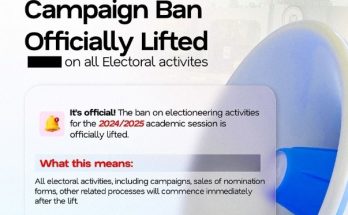
Tertiary education in Nigeria has been undergoing a downward transformation since the past few decades. It has gone from being free for all to what the rich only can mostly afford; it has also shifted from a fundamental right to a market commodity that is negotiated and sold. This shift, undoubtedly, has profound implications for students, families, and the broader society.
Historically, tertiary education in Nigeria used to be heavily subsidized by the government which made it accessible to a large segment of the population. Then, the focus was on providing quality education to all regardless of the socio-economic background or status. However, with time, the same government started introducing policies and today, this has led to a steady move towards the commercialization of education. This trend, for context, is evident in the significant increase in school fees across the country and the extra mile that students at various levels have to go to be educated.
For example, at some point in the past, Nigeria’s premier institution, the University of Ibadan, used to be the cheapest federal university but today, this same institution is almost becoming a school of the rich with the increment in fees and other statutory fees students have to pay to be in the classroom.
This hike has made it nearly impossible for the average Nigerian student to afford higher education without substantial financial support. Other universities have followed suit; raising fees to extents that are unattainable for many families, looking at the living conditions of the people. The result is a growing divide between those who can afford to pay for education and those who cannot. This is the leading path to increased dropout rates and limited access to higher education.
The Student Loan and Work-Study Schemes
In response to the rising costs of education amid the economic hardship, two primary solutions have been proposed and implemented: student loans and work-study schemes. While these initiatives aim to mitigate the impact of exorbitant fees, they also come with their own set of challenges and limitations.
On May 24, the federal government opened applications for the student loan scheme as a way to help students finance their education. While this can provide immediate relief, it also saddles students with huge debt which could possibly affect their financial stability post-graduation. In a country with high unemployment rates, the burden of debt can stifle the career prospects of young graduates, forcing them to accept low-paying jobs just to manage their repayments. Additionally, the bureaucracy and conditions involved in accessing these loans make it difficult for students who really need them to benefit from them, but regardless, the loan appears as a viable option, especially for indigent Nigerian students and many would still apply to get it.
Moreso, various universities have implemented work-study programs to allow students to earn money while completing their studies. In 2022, Lagos State University started with a pilot scheme involving 10 students aiming to make them employable upon graduation. In 2023, Olabisi Onabanjo University expanded its model to 500 students to reduce dropout rates. Following these leads, Ahmadu Bello University and the University of Ibadan have also introduced similar schemes more recently.
At the University of Ibadan, the work-study scheme was introduced shortly after the massive increase in fees and the student agitations. While the scheme aims to help students offset their expenses, it comes with its conditions: students must maintain a minimum CGPA of 2.5, be in good health, and exhibit excellent manners. This raises questions about the accessibility of the scheme, as not all students can meet these criteria. The scheme also does not account for the school’s demanding and rigid academic schedules that leave little room for work.
While these concepts are good and can offer immediate respite for students, there still do not fill the gap of proper education funding.
The Burden of Commercialization
The move towards commercializing education is evident not only in the rising costs but also in the way financial aid for students is structured. Both the federal government and university management appear to be more focused on creating revenue streams rather than ensuring affordable education for all. This shift in priorities has several short & long-term adverse effects.
The high cost of education means that many students and their families are forced to consider significant debt or engage in multiple jobs, which can adversely affect their academic performance and overall well-being. The financial strain can lead to increased stress, anxiety, and a decline in mental health among students all of which can undermine the overall educational experience. Expensive education also means lower numbers of graduates, a decrease in educated populace and fall in employable citizens. This is a downhill trajectory for a country with an already low literacy rate, and an overworked labor market.
Conclusion
The commercialization of education in Nigeria reflects a broader trend of treating education as a market commodity rather than a public good. While student loans and work-study schemes provide some relief, they are not comprehensive solutions to the underlying issue of inadequate funding for education. As long as the focus remains on generating revenue rather than ensuring equitable access to quality education, the gap between the privileged and the underprivileged will continue to widen.
It is imperative for policymakers to address these concerns and prioritize the provision of affordable, high-quality education for all Nigerians. This includes revisiting the funding structure of higher education, implementing more inclusive financial aid policies, and ensuring that educational institutions prioritize the well-being and academic success of their students. Only then can Nigeria move towards a more equitable and just educational system, where education is a right and not a commodity.
By: Sakeenah Kareem



